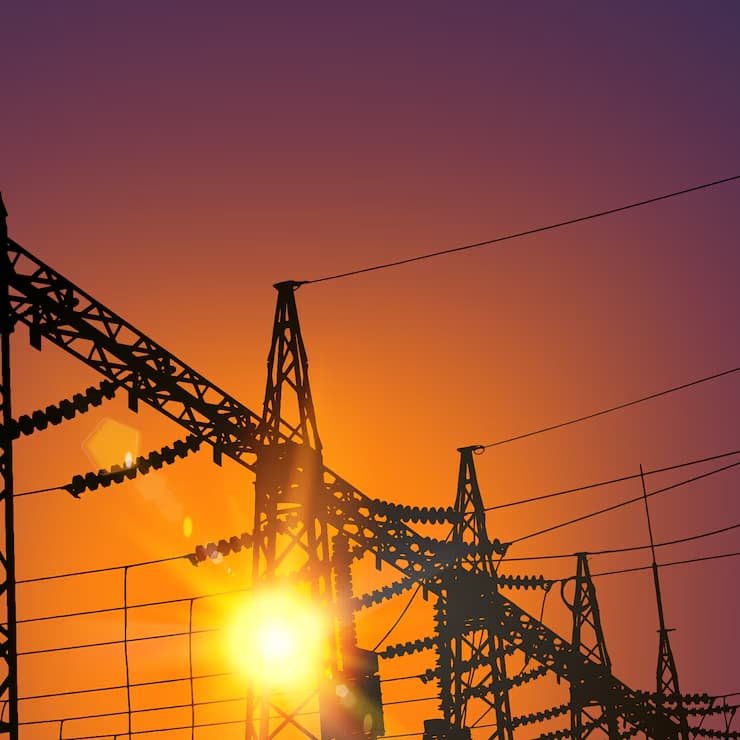Project Impact - Rajasthan

India’s RE hub
Rajasthan has highest installed solar generation capacity (over 8 GW) and is amongst the top 5 states in terms of installed wind generation capacity, making it evolve as renewable energy (RE) hub of India. The increase in RE generation, requires the state to either increase its RE exports, turn down its thermal generators, or deliberate reduction in RE generation. Either option will cause losses to the state power sector, adversely affecting its viability. At this backdrop, strengthening of transmission infrastructure through Neemrana II Kotputli transmission line project will facilitate evacuation of generated RE power, thus enabling optimal utilization of RE potential. Aligned with augmented transmission infrastructure, Rajasthan’s increased RE generation will allow it to rely less on power imports with imports estimated to fall by 22% annually while exports rising simultaneously by 11% annually.
In 2022, the government of Rajasthan signed MoUs/LoIs worth investment of Rs 3.05 lakh crore with major players in the renewable energy sector. This as well as future investment in the sector warrants strong transmission network that can efficiently evacuate power generated at RE plants, thereby enhancing viability of RE projects. This indeed can have multiplier effect attracting further investment in the RE sector of Rajasthan. This will indirectly stimulate industrial development, and create employment opportunities, thereby boosting the state economy.

Rajasthan’s economy

optimal energy mix
Augmentation of transmission infrastructure through this project will help achieve a target of 90 GW3 for RE power generation upto 2029-30. The increased RE generation will not only ensure the energy security of the state but will also help accomplish ‘optimal energy mix’ of conventional and RE power.
Rajasthan leads in Renewable Energy (RE) with identified wind and solar energy potential of 426GW. Enabling part of 7.7 GW of green power flow, the Neemrana II Kotputli Transmission Limited project is another vital cog in the machine that will accelerate the nation’s transition to a sustainable future. This will facilitate transport of power from generation areas to cater to the power demand in the state.

towards a
sustainable future

power needs
In recent years, Rajasthan witnessed severe power shortages due to abrupt surge in power demand towards the end of monsoon season coupled with partial shutdown of thermal power units either due to shortage of coal or technical glitches. As against the peak demand of 17.4 GW in the state, peak met stood at 17.2 GW in FY23, resulting in a demand-supply gap of 193 MW. This led to scheduled and unscheduled prolonged power cuts across the state. The project will facilitate power supply from Renewable Energy Zones (REZ) in the state, thereby helping avoid future load shedding and also provide for future industry power needs.
Project Impact - Haryana

grid stability
Haryana's electricity demand is rapidly rising due to population growth, industrial development, and rising living standards. Gurgaon, being the financial and technology hub has particularly witnessed its peak power demand surge past 1,800 MW in 2022 from over 1,300 MW in 2018. This project can cater to this growing electricity demand by importing power from Rajasthan, ensuring grid stability, and preventing blackouts during peak hours.
Neemrana II Kotputli transmission line project will help bring clean RE power from Rajasthan to Haryana, contributing to its green energy goals. It will also help the state meet its RPO mandate of 24.81% from any RE sources (excluding wind and hydro) for 2023-24, which will further increase to 33.57% by 2029-30. The project will thus play a crucial role in meeting RPO targets for Haryana for the next three decades.

for Haryana

and development
Access to cheaper or more reliable power can make Haryana more attractive to industries and businesses. This can indirectly stimulate employment opportunities, spur economic growth, and enhance the state's competitiveness in attracting investments. Increased economic activity leads to higher living standards, improved infrastructure, and overall development for the state and its residents.
Gurgaon has been speedily evolving as the next Cyber City of India. This digital and technological hub can be powered futuristically by moving away from conventional thermal power towards cleaner RE power. The project can play a crucial role in providing clean and green power to the sprawling Cyber City.

for Cyber City
- info@nkt.co.in
Address: Near Army Canteen, Alwar Road, Behror, Rajasthan – 301701
Project Head: Sandeep Saklani

